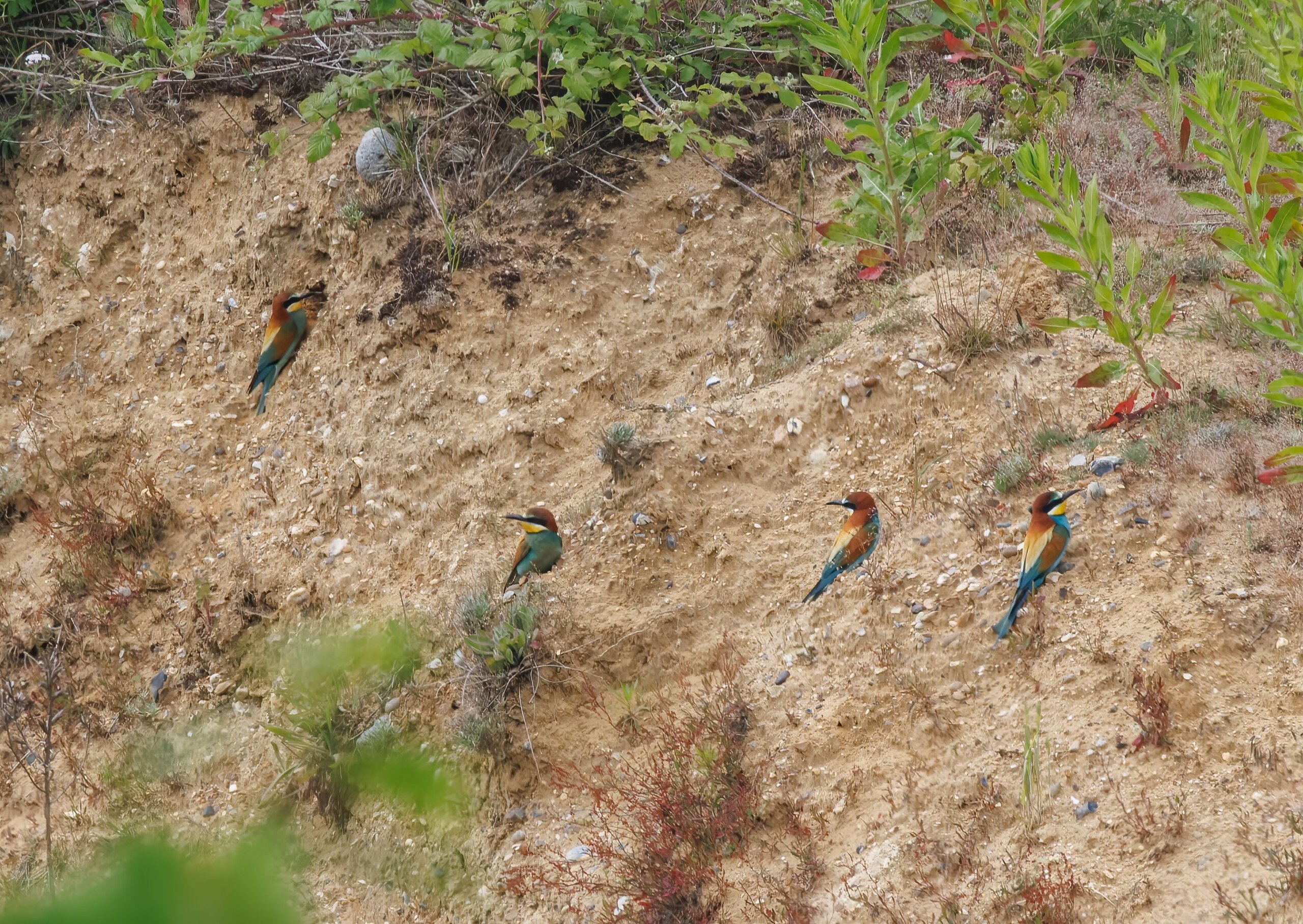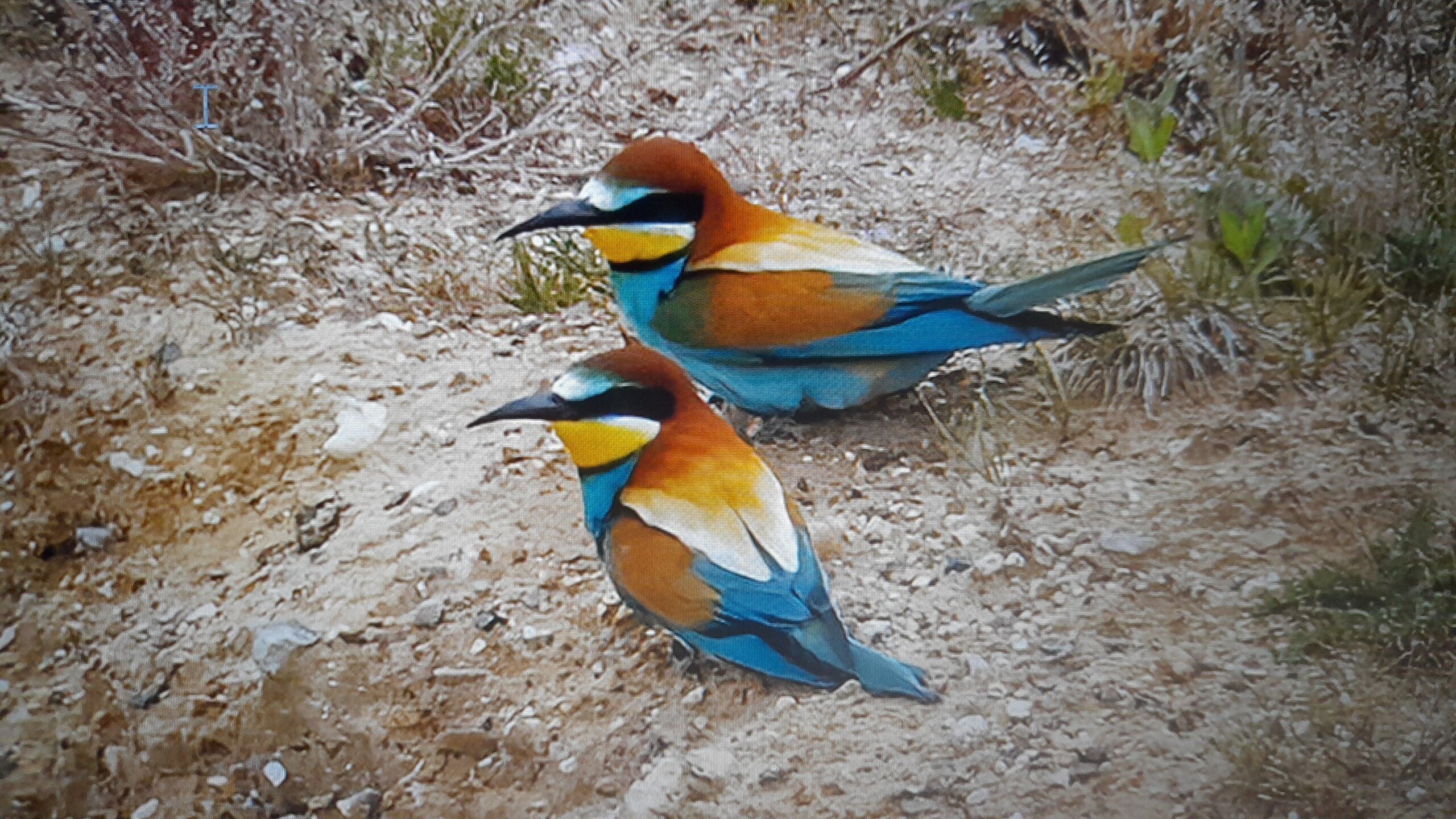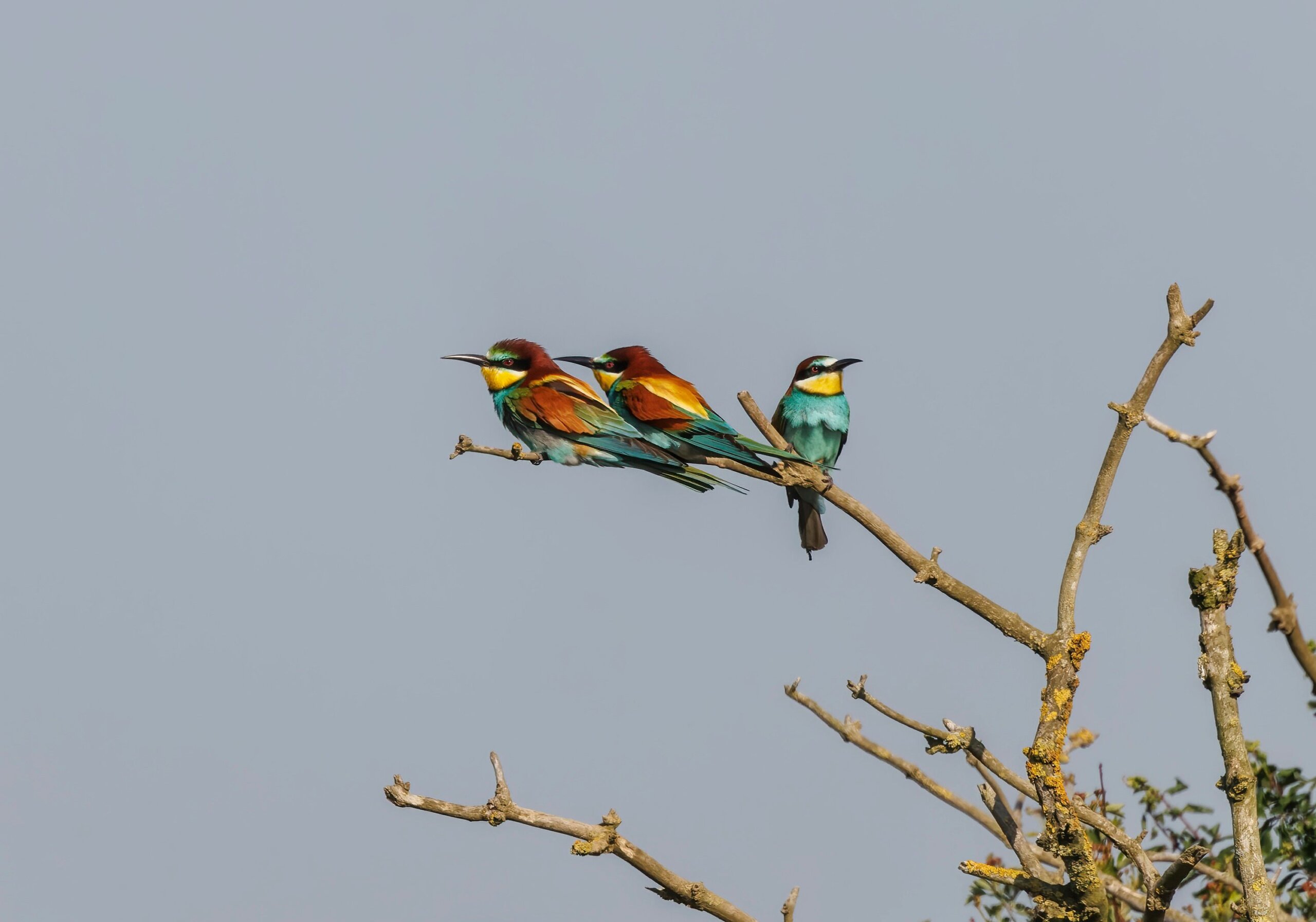Rare ‘rainbow birds’ set up summer home in Norfolk

- Seven bee-eaters were first spotted over the Jubilee Weekend and are now being closely monitored by the RSPB and the North East Norfolk Bird Club. Ensuring the protection of these rare birds, the only ones breeding in the UK, is crucial if they are to raise youngsters.
- Behind the spectacle are concerns that these are exotic birds should be enjoying the Mediterranean climate. Their increasingly regular visits to the UK, even in small numbers, is a worrying sign of how our climate is changing before our eyes.
- Having previously been rare visitors, this is now the sixth UK breeding attempt in the past 20 years. A first for Norfolk, the birds are “among the most exciting birds you can see in the UK right now” according to the RSPB.
The RSPB is closely monitoring the breeding attempt, with seven sets of rainbow wings setting hearts a-flutter.
The brightly-coloured birds – rare visitors from southern Europe and northern Africa – were found by local birdwatcher, Andy Chamberlain, over the Jubilee Weekend and have since been seen making nest burrows in a small quarry at Trimingham, near Cromer.

About the size of a starling, bee-eaters can be identified by their red backs, blue bellies and yellow throats. As well as bees, they feed on dragonflies and other flying insects, which they catch in mid-air. With beautiful flutey-calls to match their vibrant colours, they are an unmistakable visitor to have arrived in Norfolk.
The RSPB’s Mark Thomas said:
These seven bee-eaters are certainly the most colourful and exciting birds you can see in the UK right now. In 2017, thousands of people caught sight of the birds in Nottinghamshire, and we expect the same will happen again here in Norfolk.
While an incredible sight, we mustn’t forget that the arrival of these birds to our shores is due to changes to our climate and subsequent pressures on wildlife both here and across the globe. Pushed northwards by climate change, these exotic birds will likely become established summer visitors in the future, having been an early and unmissable sign in the past two decades that the Nature and Climate Emergency has reached our shores.
The RSPB and North-East Norfolk Bird Club are working together to enable everyone to enjoy the sight of these magnificently coloured birds from a safe distance so as to ensure the birds have the best chance at nesting.

Located to the east of the quarry, the car park and viewing area can be found in a large grass field off Gimingham Road at TG284384. (What3words w3w.co/forklift.shuts.gravel). Car parking costs £5 to cover site monitoring.
ENDS
[registration_form]
The times that bee-eaters are “rare visitors from southern Europe and northern Africa” is over since at least 20 years in Europe. We have yearly broods in the Netherlands, >5500 breeding pairs in Germany (2021) and a most northern colony in Denmark.
They are rare breeders in the UK, for whatever reason, but north of the Alps breeding populations are increasing steadily and rapidly.
Hans-Valentin – thank you for your first comment here. And yes, the RSPB press release is not perfectly expressed.
I saw them in Hungary years ago, they are incredibly beautiful clearly and just amazing that they are cropping up here and in the rest of northern Europe more frequently. I’m going to hold back from climate panic just for now, it’s getting a bit mad/silly when breeding bee-eaters are supposed to be something that alarms, smacks of puritanical miserableness. The climate is never static and a bit of amelioration is infinitely preferable to cooling and would only take us back to where we were a few thousand years ago when we know pond turtles and water chestnut lived in southern England. God knows what else there was. One of them might have been the electric blue/purple carpenter bee which has like the bee-eater occasionally bred here. I’d love to see it become a resident species, it’s stunning and a great ambassador for the conservation of dead wood which it’s dependent upon (hence ‘carpenter’). Exciting times ahead?
Hi Mark,
I wonder if you can tell me if it’s possible for a wheelchair user to view these beautiful birds?
I have plenty of upper strength and a wheelchair clip on handcycle that with care can get me to quite a few places.
Further, can I get my car, (in the car park) to a reasonable point for photography if need be?
Hi
The car park is a grass field with a flattened grass track down a slight slope down to the viewing point so I think you can get to the viewing point on the edge of the quarry. Problem is that you are behind a hedge which is between waist and chest height. Worth seeing if you can
Any idea how long they may stay there?
Bee eaters nested in a sand quarry Sussex in 1955. My father Stanley Bayliss Smith photographed them and wrote an article about it in Country Life (November 19th 1955, ‘Operation Bee-Eater’, pp. 1082-1083. If anyone is interested I could send them a copy (pdf) by email. Contact – tpb1001 @ cam.ac.uk Signed Tim